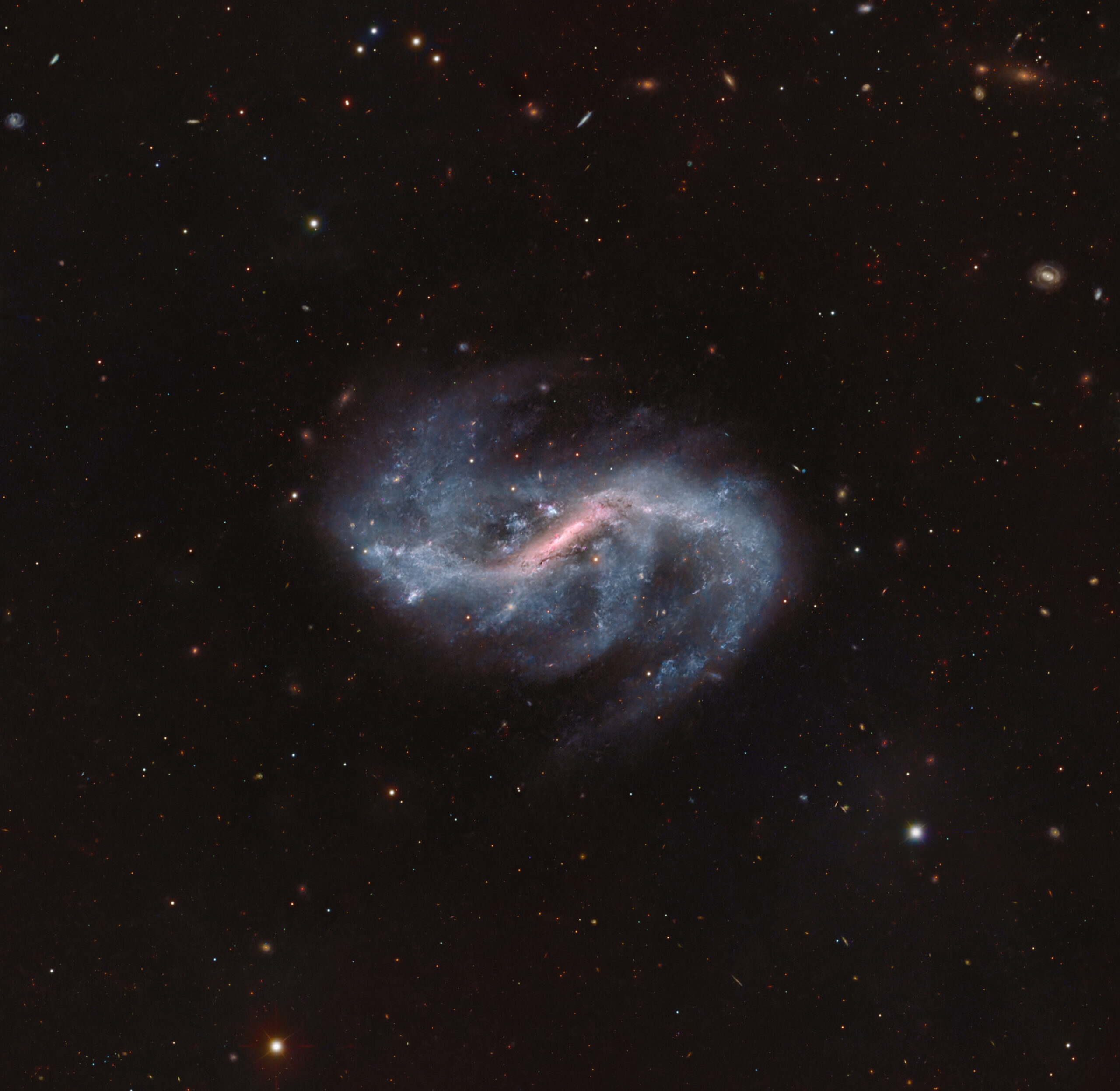
NGC 4731 is a barred spiral galaxy located about 65 million light-years away in the constellation Virgo, but unlike the orderly spirals of textbook galaxies, this one has been twisted by gravitational forces into a dramatically lopsided shape.
In this LRGB + Ha image, the galaxy’s central bar glows with rich pink Hydrogen-alpha emission, marking a zone of intense star formation. Spiral arms flare outward from the bar—fragmented, asymmetric, and stretched, especially along the southern side, where the arm appears torn and extended into space. The overall structure is highly disturbed, and not by chance: NGC 4731 lies near the edge of the Virgo Cluster and is thought to have been gravitationally tugged by interactions with its nearby companion, NGC 4731A, and possibly the cluster environment itself.
Though the core is compact and bright, the arms are flocculent and irregular, showing blue star-forming regions mixed with dusty streams, giving the entire galaxy a chaotic yet energetic appearance. The Ha data especially enhances the active regions within the bar and inner disk, adding a vivid magenta hue where young stars are lighting up clouds of hydrogen gas.
The galaxy spans about 4.2 by 2.4 arcminutes, corresponding to an actual size of roughly 80,000 by 46,000 light-years. The background is filled with faint galaxies and field stars, but the visual drama belongs to NGC 4731—caught mid-contortion, still actively forming stars amid the aftermath of a cosmic encounter.
NGC 4731 stands as a striking example of how gravity reshapes galaxies over time, transforming elegant spirals into asymmetric, starbursting relics of interaction.
Imaged in LRGBHa on my Planewave CDK 1000 at Observatorio El Sauce, Chile.
Image acquisition and processing: Mike Selby